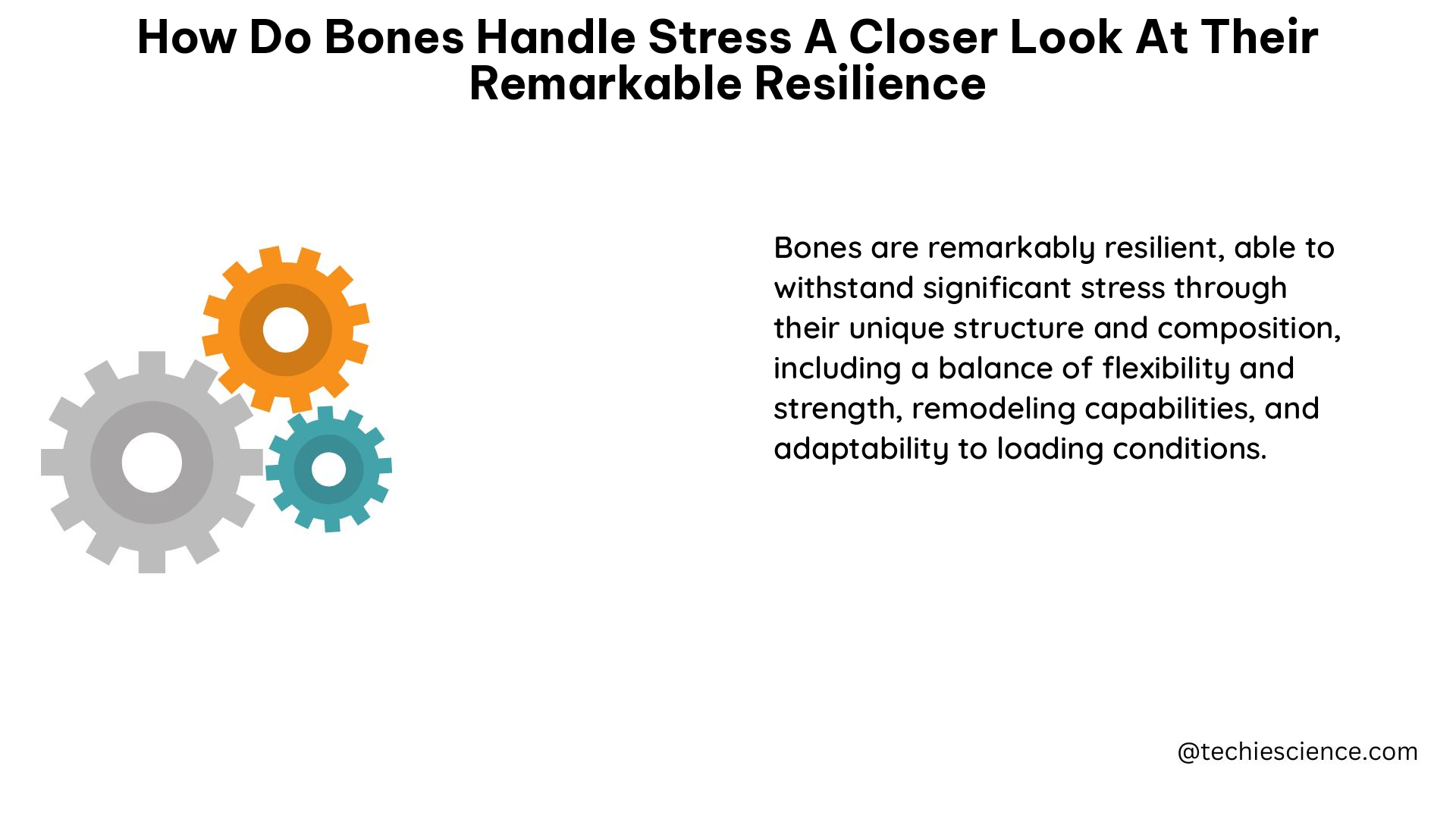Bones are remarkable structures that can handle stress through a combination of mechanical and biological adaptations. They are designed to withstand various types of loads, including compressive, torsional, transverse, and tensile forces, due to their hierarchical structure and anisotropic nature. Understanding the intricate mechanisms that enable bones to maintain their strength and integrity in the face of stress is crucial for the prevention and management of bone-related injuries.
Mechanical Adaptations of Bones
Bone Composition and Structure
Bones are composed of an organic matrix, primarily made of collagen, and an inorganic matrix, mainly composed of hydroxyapatite crystals. This unique composition provides bones with both strength and flexibility. The structure of bone can be divided into two main types: cortical (compact) bone and trabecular (cancellous) bone.
Cortical Bone
- Cortical bone is dense and has a high strength-to-weight ratio, making it resistant to compressive and bending forces.
- The average density of cortical bone is around 1.8 g/cm³, with a compressive strength of 100-200 MPa and a tensile strength of 50-150 MPa.
Trabecular Bone
- Trabecular bone has a lower strength-to-weight ratio but is more flexible and better at withstanding torsional and transverse forces.
- The average density of trabecular bone is around 0.2 g/cm³, with a compressive strength of 2-20 MPa and a tensile strength of 1-5 MPa.
Bone Anisotropy and Hierarchical Structure
- Bones exhibit anisotropic behavior, meaning their mechanical properties vary depending on the direction of the applied load.
- This anisotropic behavior is a result of the hierarchical structure of bone, which includes the orientation of collagen fibers, the arrangement of hydroxyapatite crystals, and the organization of the osteons (the basic structural unit of cortical bone).
- The hierarchical structure of bone allows it to efficiently distribute and dissipate stress, enhancing its overall resilience.
Quantifying Bone Strength
Bone strength can be measured using various techniques, including:
- Dual-Energy X-ray Absorptiometry (DXA): Measures bone mineral density (BMD), which is a surrogate measure of bone strength.
- BMD values are typically reported in g/cm² and can be used to assess the risk of fractures.
-
The World Health Organization has established T-score and Z-score thresholds for the diagnosis of osteoporosis and osteopenia.
-
Peripheral Quantitative Computed Tomography (pQCT): Provides a more detailed assessment of bone structure, including cortical and trabecular bone parameters.
- pQCT can measure bone geometry, such as cross-sectional area, cortical thickness, and medullary cavity diameter, which are important determinants of bone strength.
-
Specific pQCT-derived parameters, such as the stress-strain index (SSI), can be used to estimate bone strength under different loading conditions.
-
Biochemical Markers: Serological and urinary samples can be used to assess bone metabolism, which provides indirect information about bone strength.
- Markers of bone formation (e.g., osteocalcin, procollagen type I N-terminal propeptide) and bone resorption (e.g., C-terminal telopeptide of type I collagen) can be measured.
- Changes in these markers can indicate the balance between bone formation and resorption, which is a key factor in maintaining bone strength.
Biological Adaptations of Bones

Mechanotransduction and Bone Remodeling
Bones can adapt to mechanical stress through a process called mechanotransduction, where mechanical stimuli are converted into biochemical signals that trigger bone adaptation.
- Mechanotransduction:
- Osteocytes, the most abundant cells in bone, act as mechanosensors and detect mechanical stress.
-
Osteocytes release signaling molecules, such as prostaglandins, nitric oxide, and ATP, which initiate the bone remodeling process.
-
Bone Remodeling:
- Bone remodeling is a continuous process where old bone is removed (resorption) and new bone is formed (formation).
- This process is regulated by the balanced activity of osteoclasts (bone-resorbing cells) and osteoblasts (bone-forming cells).
- Bone remodeling allows bones to maintain their strength and integrity by adapting to the mechanical demands placed on them.
Bone Stress Injuries (BSIs)
Excessive mechanical stress on bones can lead to bone stress injuries (BSIs), which can range in severity from a stress response to a stress fracture.
- Stress Response:
- A stress response is the earliest stage of a BSI, characterized by bone marrow edema without a visible fracture line.
-
Stress responses are often reversible with rest and can be detected using magnetic resonance imaging (MRI).
-
Stress Fracture:
- A stress fracture is a partial or complete break in the bone caused by repetitive stress.
- Stress fractures can be diagnosed using various imaging techniques, such as MRI, which can detect bone edema and fracture lines.
- MRI can also be used to grade the severity of BSIs based on the extent of bone marrow and periosteal edema.
Understanding the mechanical and biological adaptations of bones is crucial for the prevention and management of bone stress injuries. By quantifying bone strength and monitoring bone metabolism, healthcare professionals can develop targeted interventions to enhance bone resilience and reduce the risk of injury.
References:
- Bone Strength – an overview | ScienceDirect Topics. (n.d.). Retrieved from https://www.sciencedirect.com/topics/biochemistry-genetics-and-molecular-biology/bone-strength
- Biological basis of bone strength: anatomy, physiology and … – NCBI. (2020, April 24). Retrieved from https://www.ncbi.nlm.nih.gov/pmc/articles/PMC7493450/
- Two Approaches to Classifying and Quantifying Physical Resilience in Longitudinal Data. (n.d.). Retrieved from https://www.researchgate.net/publication/332470947_Two_Approaches_to_Classifying_and_Quantifying_Physical_Resilience_in_Longitudinal_Data
- Correlation of MRI Grading of Bone Stress Injuries with Risk Factors and Time to Return to Full Sport Participation. (n.d.). Retrieved from https://www.ncbi.nlm.nih.gov/pmc/articles/PMC4367232/
- Bone Stress Injuries – Physiopedia. (n.d.). Retrieved from https://www.physio-pedia.com/Bone_Stress_Injuries

The lambdageeks.com Core SME Team is a group of experienced subject matter experts from diverse scientific and technical fields including Physics, Chemistry, Technology,Electronics & Electrical Engineering, Automotive, Mechanical Engineering. Our team collaborates to create high-quality, well-researched articles on a wide range of science and technology topics for the lambdageeks.com website.
All Our Senior SME are having more than 7 Years of experience in the respective fields . They are either Working Industry Professionals or assocaited With different Universities. Refer Our Authors Page to get to know About our Core SMEs.